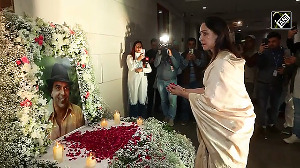With the Bharat New Vehicle Safety Assessment Programme coming into effect from October next year, Indian carmakers will have no option but to manufacture safer cars, says Shyamal Majumdar.

Two-wheelers accounted for the highest share of road accidents at 28.8% in 2015.
In fact, the share has been increasing steadily from 26.3% in 2013 and 27.3% in 2014.
It was in 2009 that India earned the dubious distinction of the “accident capital of the world”, courtesy the first-ever Global Status Report on Road Safety by the World Health Organization (WHO).
The label is not without reason: an average of 15 people die every hour in road accidents in the country.
WHO has estimated that India accounts for one per cent of the world’s vehicles and 10 per cent of its road fatalities.
What was being talked in hushed tones till a couple of years back became a matter of intense debate after Global NCAP (New Car Assessment Programme) crash-tested popular entry-level Indian cars, almost all of which failed the test.
The test was repeated this year and the results were hardly different.
While several automakers cried foul and floated conspiracy theories, no one could deny that India was the only one in the top 10 car markets in the world that did not have an NCAP.
All that is going to change now with the country coming up with the Bharat New Vehicle Safety Assessment Programme.
The new regime, scheduled to begin from October 1, 2017, mandates that all new cars will have to get safety ratings.
Those that are already present in the market have been given a deadline of October 1, 2019.
These norms are welcome as Indian carmakers will have no option but to manufacture safer cars.
But that brings us to a related question: will a mandatory crash test norm for cars help solve the problem of road accidents in the country?
Or, to put it bluntly, are we putting a disproportionate blame on India’s carmakers?
The answer lies in some of the figures put out by the research wing of the ministry of road and highways transport.
An analysis of road accidents in urban and rural areas for calendar year 2015 shows that rural areas are more prone to accidents.
While rural areas account for 53.8 per cent of the total number of road accidents, urban areas have 46.2 per cent share.
In fatal accidents, the share of rural areas is even higher at 61.3 per cent, compared to 38.7 per cent of urban India.
This calls for a significant improvement in rural infrastructure to reduce accidents, the ministry says.
There is more to suggest that it’s perhaps unfair to make cars the only villain of the piece.
While motorised vehicles accounted for 95.5 per cent of the total road accidents, two-wheelers accounted for the highest share at 28.8 per cent in 2015, followed by cars, jeeps and taxis at 23.6 per cent.
In fact, the share of two-wheelers has been increasing steadily from 26.3 per cent in 2013 and 27.3 per cent in 2014.
This shows it’s two-wheelers, and not cars, that have the most vulnerable and unprotected road users in the country.
In its obsession with cars, the government has perhaps forgotten to focus on this aspect and bring out an integrated policy on reducing road accidents in the country.
Then there is the issue of dealing with the rampant corruption in doling out driving licences and the absence of a proper policy on skilling and training of drivers.
After all, driver faults accounted for 77 per cent of total accidents - 72.6 per cent of the total number of persons killed and 80.3 per cent of the total number of persons injured.
Many experts also say roads in India are never built with safety prioritised over speed or convenience, with low urban speed-limits, pedestrian zones and barriers that separate cars from bikes and oncoming traffic.
But almost all the money that is spent on building roads in India go on asphalt and almost none on safety, so the roads that are supposed to make everyone’s life comfortable bring grief, too.
It’s not a problem typical of India alone. Studies have shown how across the developing world, laws and safety measures are failing to keep up with population growth, urbanisation and rising car use.
The irony is it’s not that expensive as just one-three per cent of the construction budget is often enough to make a road much safer.
WHO has calculated that enforcing speed limits and drunk-driving laws in South-East Asia would cost just 18 cents per person per year.
It’s obvious that car manufacturers and their lobby, the Society of Indian Automobile Manufacturers (Siam), should immediately end their current state of denial and inform the public about their road map for meeting globally accepted car safety standards.
But an equally strong argument would be that a better certification and testing process alone won’t do any good.
An integrated view needs to be taken to understand as to how many fatalities are due to head-on collisions and other factors such as road conditions, driver behaviour, traffic conditions, enforcement and overloading, among others.
And silence is not necessarily golden as far as two-wheelers are concerned.
Photograph kind courtesy: Global NCAP










